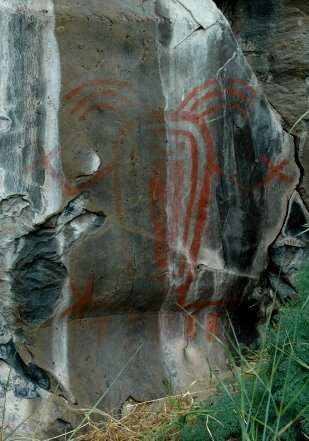The Oregon Archaeological Society is pleased to sponsor the March 5, 2013 lecture titled: "40,000 Years of Life and Death in a Spanish Cave: Excavations in El Miron, Cantabria."
The featured
speaker is the distinguished Dr. Lawrence Guy Straus, the Leslie Spier
Distinguished Professor of Anthropology at the University of New Mexico College
of Arts and Sciences.
El Miron
Cave, located in the Cantabrian Cordillera in Spain has been excavated by
Professor Straus and a Spanish colleague since 1996. Scientifically
discovered in 1903, but ignored by archaeologists despite being surrounded by
cave art sites, El Miron is a large cave with a strategic location. First
visited by Straus in 1973, it has yielded results beyond his wildest
expectations.
The cultural sequence begins in the late Middle Paleolithic
and continues through evidence of Medieval visits, with radiocarbon dates
ranging from 41,000 BP to AD 1400. As the surrounding environment changed, the
evidence of human use of the cave also changed.
The
site has been the subject of numerous multidisciplinary studies of the climate,
landscapes, human technology, subsistence, and artistic activity that have resulted
in dozens of publications in Europe and the U.S. Major discoveries have included
dated portable art objects, rock engravings, an associated human burial,
evidence of human occupation and livestock stabling, and ceramic and metal
technology.
Straus has
conducted excavations in Spain, France, Portugal, and Belgium, principally at
Upper Paleolithic (but also Middle Paleolithic, Mesolithic and Neolithic)
sites. He is particularly interested in human adaptations to the diverse
and changing environments of the Last Glacial in Western Europe.
He has authored
numerous publications and has been the Editor-in-Chief of the Journal of
Anthropological Research since 1995. He has been given lifetime achievement
awards by the Stone Age Institute at Indiana University and the Sociedad
Prehistorica de Cantabria, and has held offices in the international unions for
Quaternary Research (INQUA) and Pre- and Proto-historic Sciences (UISPP).
The presentation is at Oregon Museum of Science and Industry (OMSI) is free and open to the public. A general business meeting begins at 7 PM, followed by the lecture.
See www.oregonarchaeological.org/events or call 503-727-3507 for more information.
The presentation is at Oregon Museum of Science and Industry (OMSI) is free and open to the public. A general business meeting begins at 7 PM, followed by the lecture.
See www.oregonarchaeological.org/events or call 503-727-3507 for more information.


















